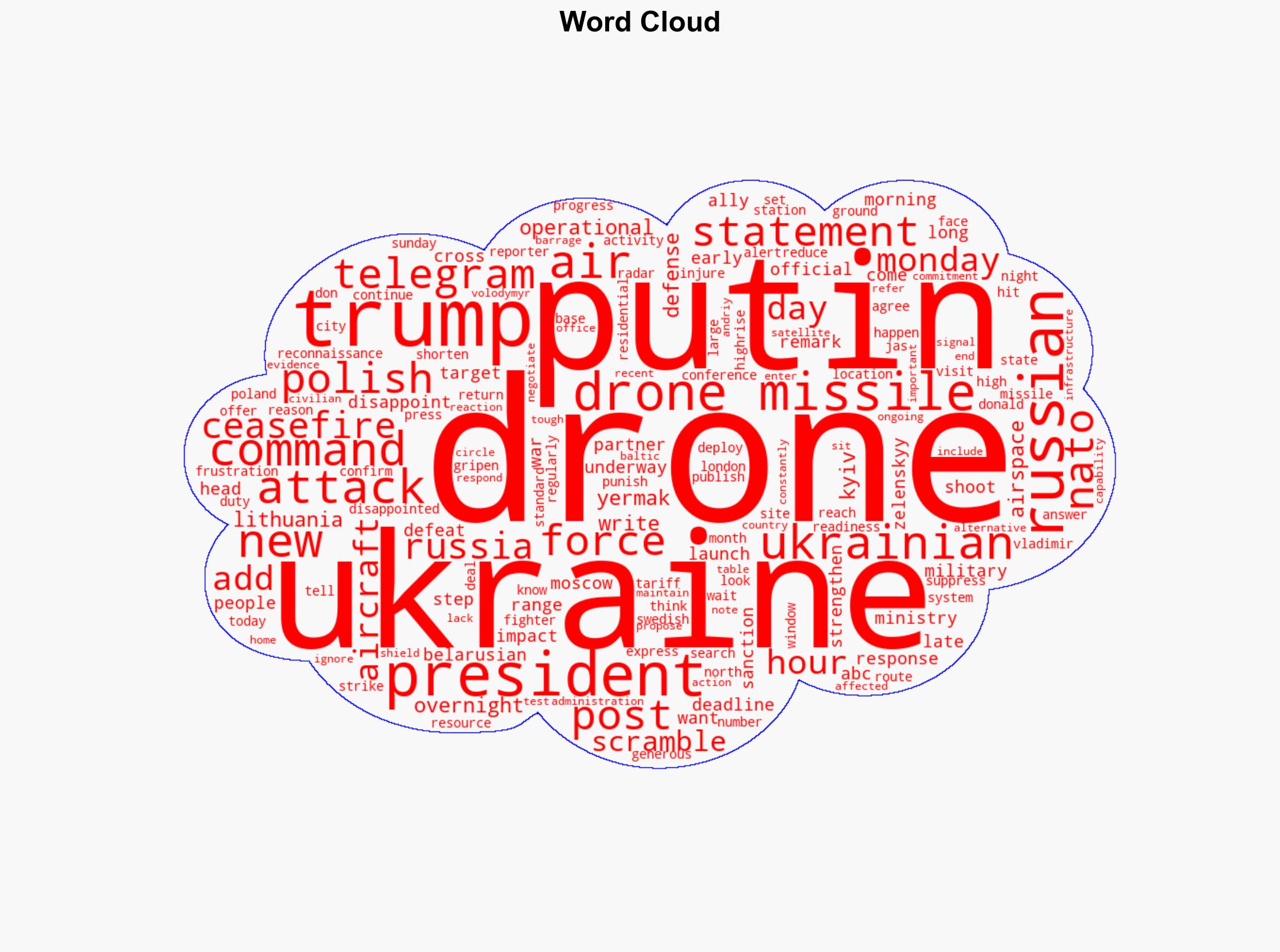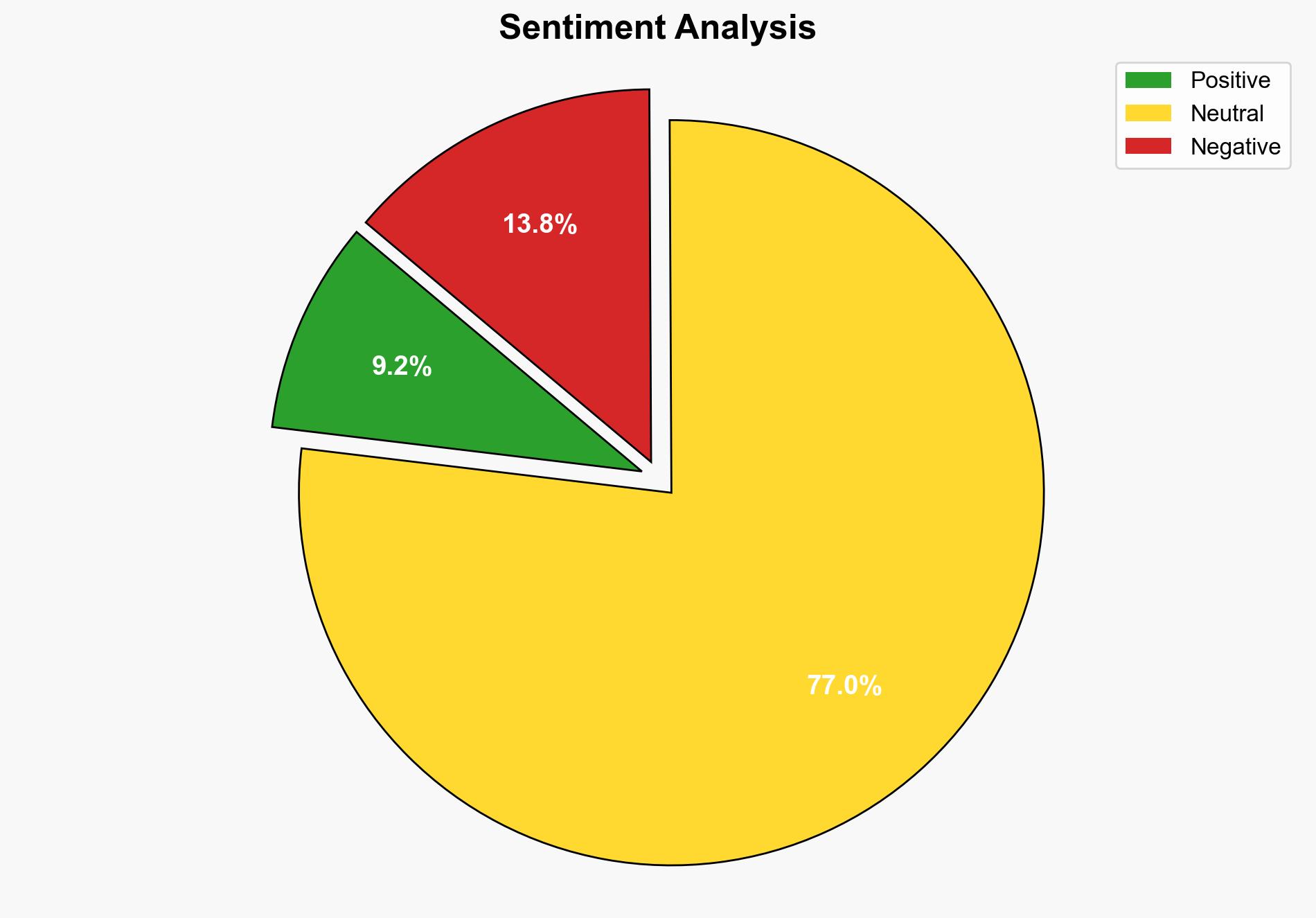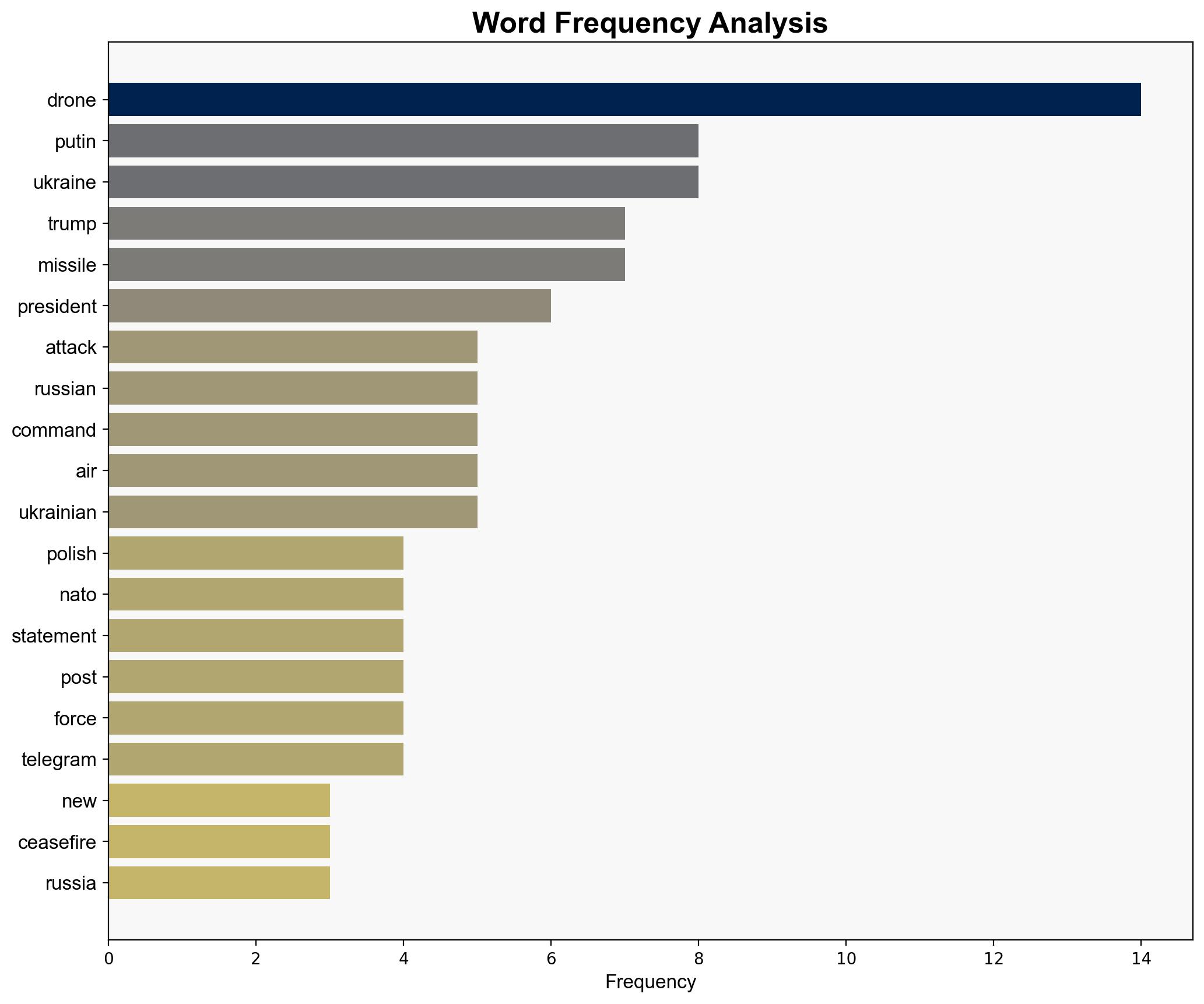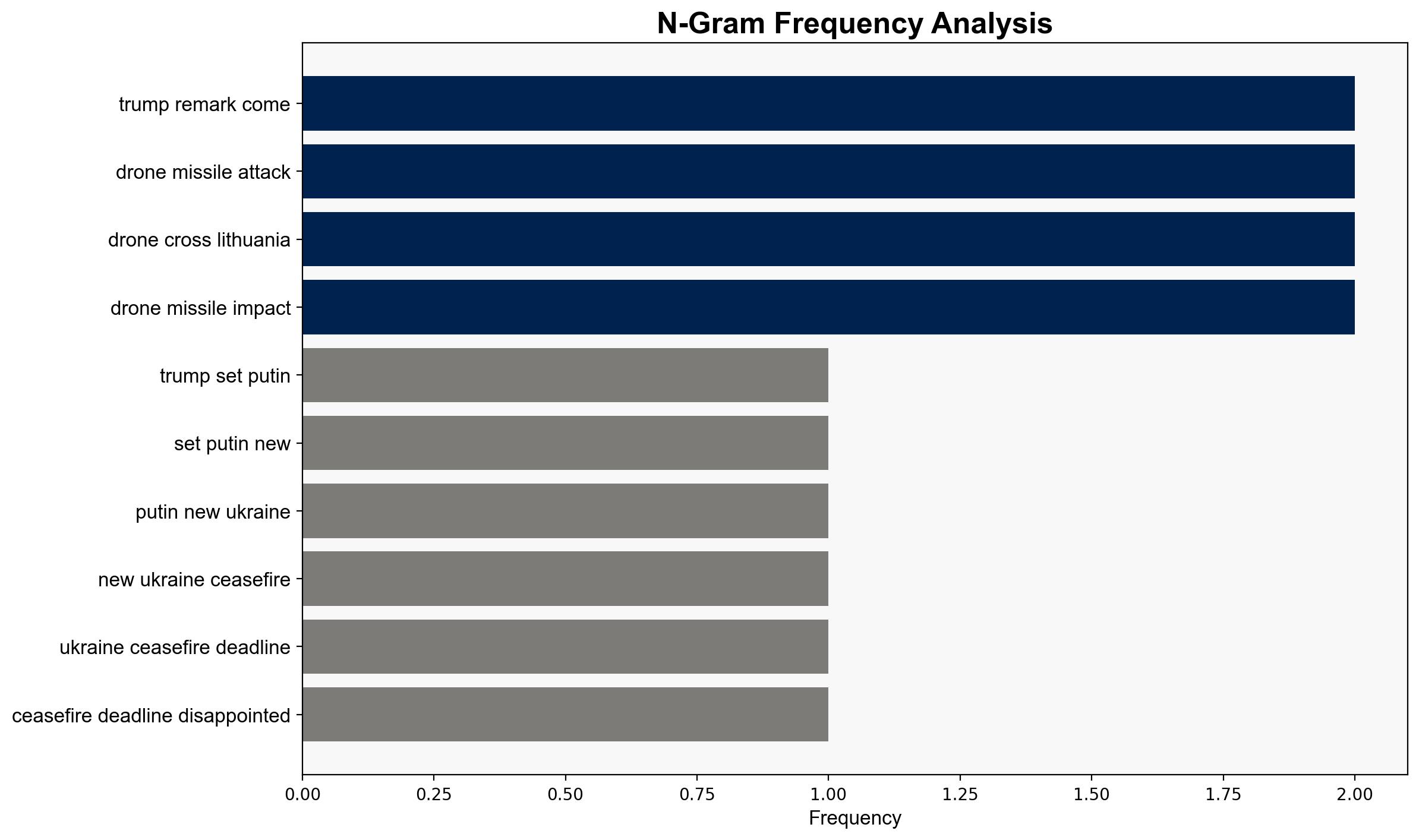NATO aircraft scrambled during major Russian drone missile strike on Ukraine – ABC News
Published on: 2025-07-28
Intelligence Report: NATO aircraft scrambled during major Russian drone missile strike on Ukraine – ABC News
1. BLUF (Bottom Line Up Front)
The most supported hypothesis is that Russia’s recent drone and missile strikes on Ukraine, coupled with the scrambling of NATO aircraft, are strategic maneuvers to test NATO’s response and resolve. Confidence Level: Moderate. Recommended action includes reinforcing NATO’s air defense readiness and enhancing diplomatic efforts to deter further escalation.
2. Competing Hypotheses
1. **Hypothesis A**: Russia’s drone and missile strikes are intended to test NATO’s response capabilities and resolve, particularly in the Baltic region, following the recent ceasefire proposal.
2. **Hypothesis B**: The strikes are primarily aimed at undermining Ukraine’s infrastructure and morale, with secondary consideration given to NATO’s reaction, as a demonstration of Russia’s military capabilities and resolve.
Using Analysis of Competing Hypotheses (ACH 2.0), Hypothesis A is better supported due to the involvement of NATO aircraft and the crossing of Lithuanian airspace, which directly engages NATO interests and tests its response.
3. Key Assumptions and Red Flags
– **Assumptions**: It is assumed that Russia’s actions are deliberate provocations rather than miscalculations. It is also assumed that NATO’s response is a direct counter to perceived Russian aggression.
– **Red Flags**: The timing of the strikes coinciding with Trump’s statements raises questions about potential coordination or miscommunication. The lack of detailed intelligence on the specific targets and outcomes of the strikes is a significant blind spot.
4. Implications and Strategic Risks
– **Geopolitical Risks**: Escalation of tensions between NATO and Russia, particularly in the Baltic region, could lead to broader military confrontations.
– **Economic Risks**: Increased sanctions on Russia could destabilize regional economies and impact global markets.
– **Cybersecurity Risks**: Potential for cyber retaliation from Russia targeting NATO member states.
– **Psychological Risks**: Heightened fear and uncertainty in Eastern Europe, potentially leading to increased military spending and regional instability.
5. Recommendations and Outlook
- Enhance NATO’s air defense systems and readiness in the Baltic region to deter further provocations.
- Engage in diplomatic efforts to de-escalate tensions, possibly through back-channel communications with Russia.
- Monitor for cyber threats and bolster cybersecurity defenses across NATO member states.
- Scenario Projections:
- Best Case: Successful diplomatic engagement leads to a de-escalation of tensions.
- Worst Case: Continued provocations lead to a military confrontation between NATO and Russia.
- Most Likely: Ongoing low-level provocations with intermittent diplomatic engagements.
6. Key Individuals and Entities
– Vladimir Putin
– Donald Trump
– Andriy Yermak
– Volodymyr Zelenskyy
7. Thematic Tags
national security threats, cybersecurity, counter-terrorism, regional focus





